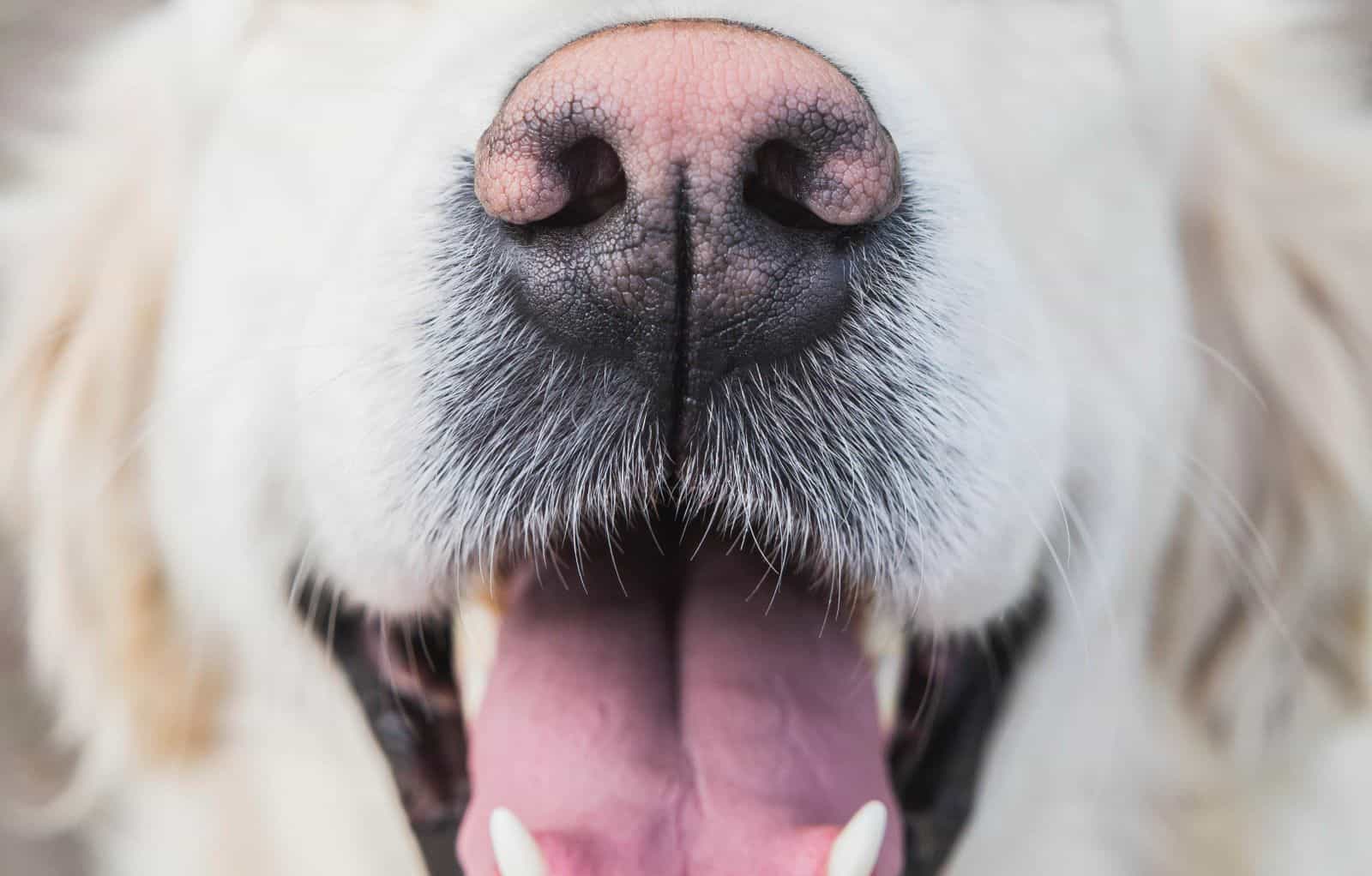A dog’s nose is one of its truly strongest features. Well, did you know that dogs have as many as 300 million scent cells in their nose! Think of all the jobs that dogs can be successful in, such as rescue actions or drug detection.
We all know that dogs are capable of smelling anything, thanks to their sense of smell.
But let’s get back to the dog’s nose. Your dog has a black nose. But, have you ever noticed that your dog’s nose has changed color and become pink or liver-colored? If you did, I’m sure you were quite surprised and wondered what was going on.
Why does a dog’s nose turn pink?
Don’t worry ahead of time as we bring you possible explanations for this unusual phenomenon!
Why Do Dogs Noses Turn Pink?
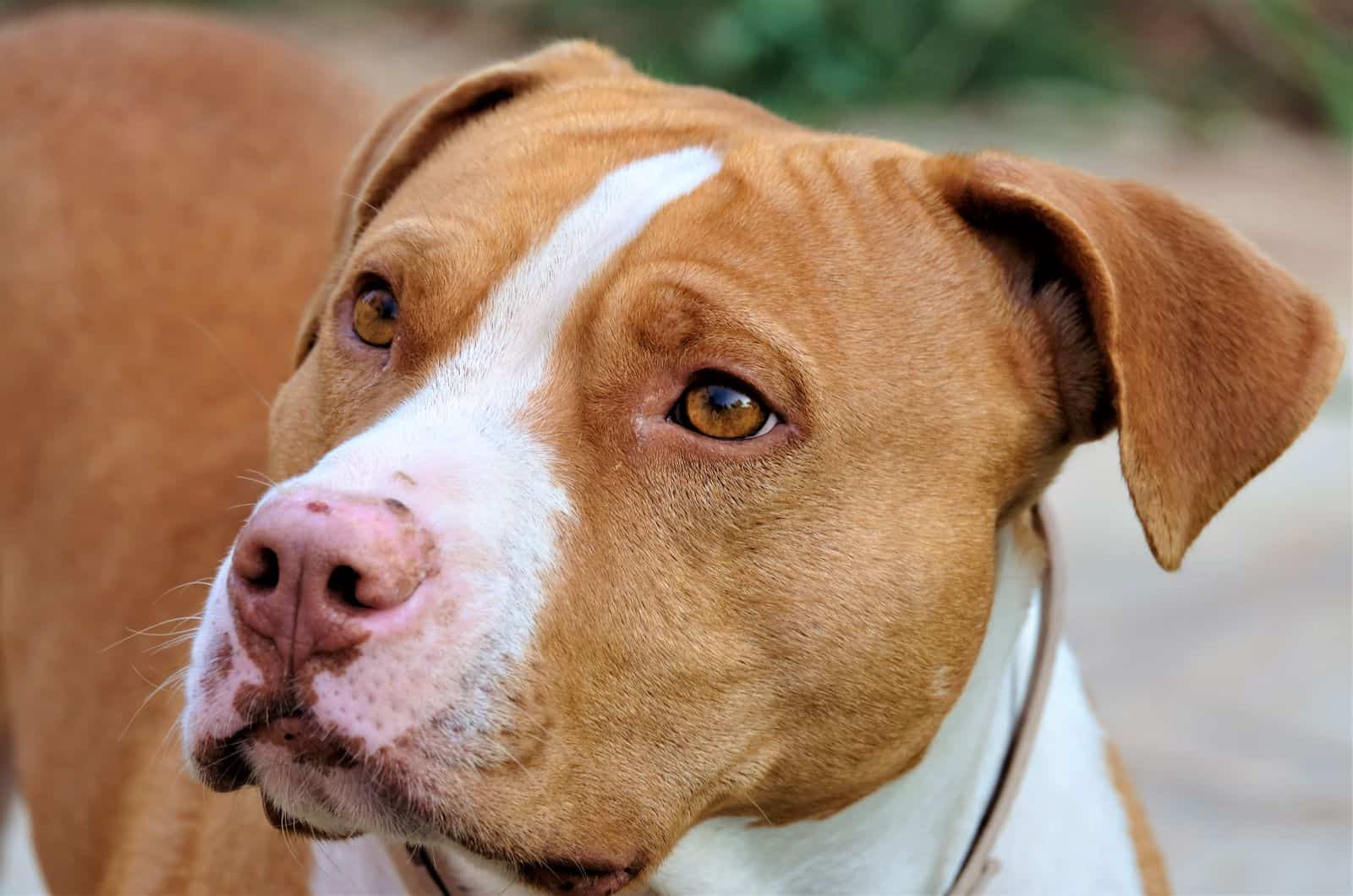
If you notice any change in your dog’s behavior or appearance, and if such a phenomenon did not manifest itself earlier, I believe that you are immediately worried and trying to find a solution for this unusual appearance.
But, to encourage you right from the start, every change does not necessarily mean that your dog is sick or that something bad is happening to him. So, if your dog’s nose has changed color, this does not mean for sure that something bad is happening with your dog.
We have prepared a list of 12 explanations as to why do dogs noses turn pink.
1. The Snow Nose
Have you heard of a phenomenon called a winter nose or a snow nose? This is the first cause on our list of explanations as to why a dog’s nose turns pink. This is not for no reason since a snow nose is the leader in causing a dog’s nose to turn pink.
Why does this happen? Well, cold weather affects a dog’s nose in terms that a loss of pigment shows in many dogs, which results in the dark dog’s nose turning pink.
So, it is very possible that you will notice a pink nose in your puppy, (which normally has a dark nose) during the winter. It is still not entirely clear why this occurs, but it is believed that the culprit is a lack of sunlight during colder days. Also, dogs probably spend less time outside.
If you are living in an area with a cold climate and you notice a pink nose in your dog during the winter months, there is a high probability that this is the snow nose. So, you have nothing to worry about.
Some dog breeds are even known as dogs with a pink nose during the winter time! The most known of them are the following:
• Labrador Retriever
• Bernese Mountain Dog
• Siberian Husky
• German Shepherd
• Golden Retriever
2. The Dog’s Nose Has Been Injured
We all know how playful dogs can be. Chasing with other animals, knocking children to the floor while playing, making a mess around the house – all dog owners know what I’m talking about.
Most dogs are simply curious and playful by nature. Therefore, your dog’s pink nose could be the result of an injury your dog earned while undertaking some of its usual research activities.
It may not be a serious injury at all, but a dog’s nose is sensitive, so it immediately changes color. If you see that after a few days, your dog’s nose returns to its normal color, it is clear that it was a minor injury without serious consequences.
3. Plastic Dog Bowls
Have you ever thought about the importance of the bowl from which your dog eats food and drinks water?
Believe it or not, the plastic dog food container might cause a change in the color of your dog’s nose.
If there really isn’t any other cause for your dog’s nose to change color, we advise you to switch from a plastic food container to one that is made of stainless steel. Also, ceramic bowls are a good idea for your pet to enjoy his dog food without worries about its nose turning pink!
This reason as to why the dog’s nose turned is quite harmless. So, this is something very easy to solve, and it does not cause any serious problems.
4. The Dog’s Nose Got Sunburned
Just like humans, dogs can get sunburned, too… if not worse.
A dog’s skin is extremely sensitive, and strong sunlight can damage it. If your dog’s nose turned pink, maybe your dog was recently outside enjoying the sun.
A dog’s nose is one of the areas that is most sensitive to the sun.
Dogs with lighter fur, hairless dogs, as well as short-haired dogs are particularly at risk here. Some of the dogs that are more prone to sunburn are, for example, the Dalmatian, the Whippet, and the Beagle.
Unlike dogs with lighter hair, dogs with dark hair have a higher level of melanin, so they are more protected.
Is there anything you can do for this not to happen to your dog anymore?
Make sure that your dog is not exposed to strong sunlight. So, during the critical period of the day, allow your dog to be sheltered from the strong sun. Today, we even have sun creams available for dogs! It should be noted here that you should definitely not use human sunscreen on your dog.
You can easily prevent your dog from getting sunburned during hot summer days.
5. The Dog Is Getting Old
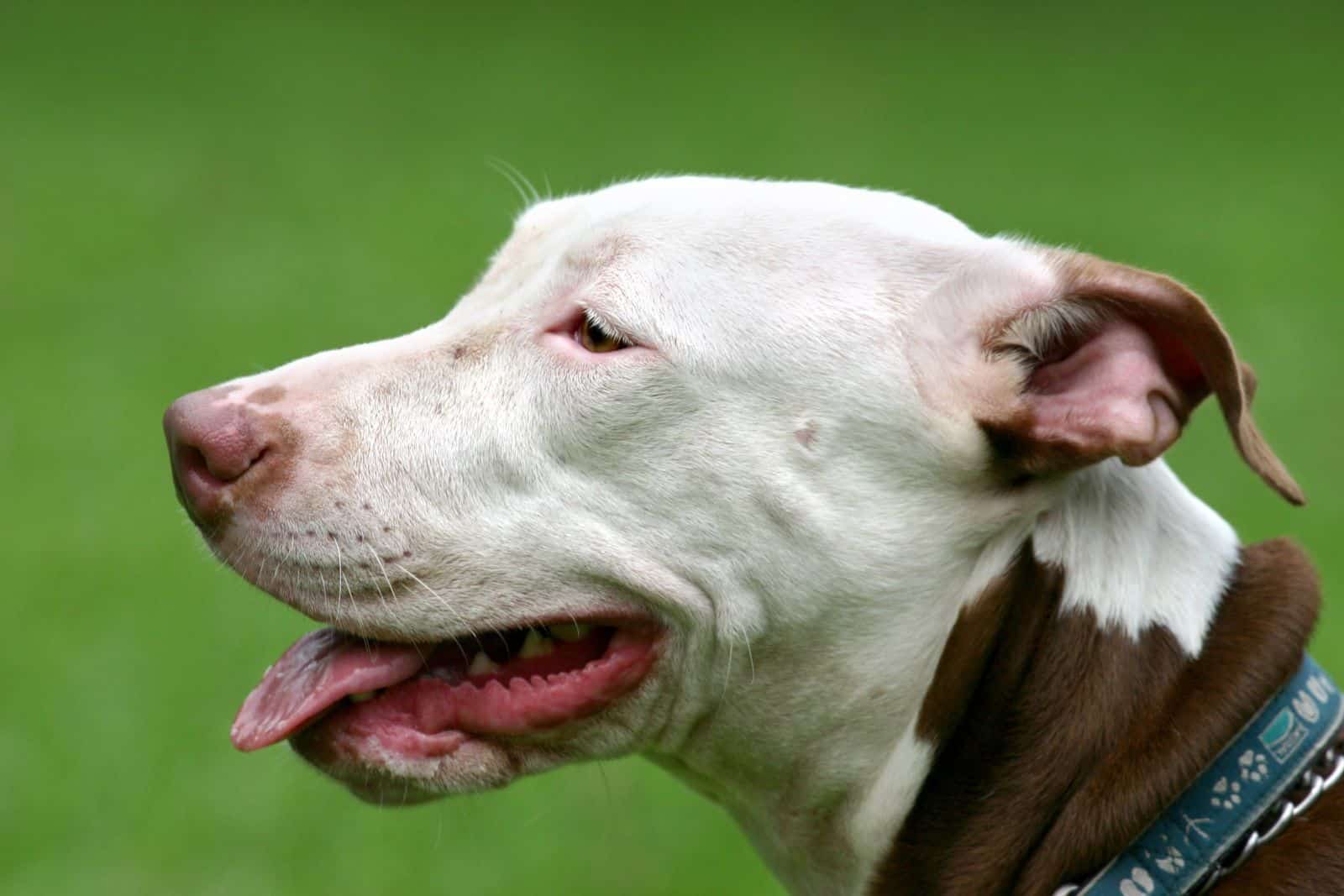
As we age, we notice certain changes in our body. It’s the same thing with our dogs. You must have noticed some behavioral changes in your senior dog, such as less desire to play, and him seeking solitude.
Just as there are changes in behavior, some changes are also visible in a dog’s body. A pink nose is one of the visible signs that your dog is getting old.
With age, the production of melanin decreases, so a change in a dog’s nose color is something that occurs quite often. Unfortunately, we cannot influence this in any way, and no matter how much we love our pet, his aging is inevitable, and so are the symptoms that come with it.
6. Vitiligo
Vitiligo is an autoimmune disease that dogs might suffer from.
If the dog suffers from Vitiligo, depigmentation appears on its body, which is mostly noted on the nose, but also on the lips and eyelids of the dog.
Melanocytes are cells that produce melanin, and in dogs with Vitiligo, these cells do not function properly.
Vitiligo is a disorder that cannot be treated; therefore, the dog is not in any pain, it just has a lack of pigment. However, if your dog has Vitiligo, you need to be careful and not expose it to strong sunlight because the lack of pigment makes it easier for the dog to get sunburned.
Certain dogs are more likely to develop Vitiligo. Some of them are Rottweilers, Labradors, and Siberian Huskies.
7. Bacterial Infections
Bacterial infections in a dog’s nose can also be the cause of a pink nose in dogs. In addition to a pink nose, you will probably notice some other symptoms such as sneezing, lack of appetite, and a generally worse health condition in your puppy.
If you have ruled out the possibility of another cause of a pink nose in a dog, it is best to consult a veterinarian about bacterial infections.
8. Contact Dermatitis
Why is my dog’s nose pink? you are asking. Contact dermatitis might be one cause of this appearance.
Contact dermatitis is a disease that occurs when a dog comes in contact with a substance to which it will react badly.
Sometimes, during its life, your dog can develop an excessive sensitivity to a specific substance from its environment, which previously did not bother it. For example, your dog loves to eat grass, but you have noticed that all of the sudden, the grass causes an allergic reaction in your dog.
Some of the other main substances that cause contact dermatitis in dogs are materials, such as plastic or wool, as well as antibiotics, various shampoos, etc.
Contact dermatitis mostly occurs on the parts of the dog’s body that are less covered by hair; therefore, it is clear that the dog’s nose is one of the most exposed areas.
Read Next: My Dogs Paws Are Pink: Is That Normal Or A Cause For Worry?
How can you tell if your dog has contact dermatitis? In addition to a pink nose, you will most likely notice a skin rash, as well as scabs, crusts, and hair loss in your dog. Also, the dog will lick its skin and scratch much more than it normally would.
If you notice any of the above symptoms, along with a pink nose, consult your veterinarian immediately.
9. Discoid Lupus
Although this can be a harmless phenomenon, a pink nose in a dog can also indicate more serious health problems, such as discoid lupus. This is an autoimmune disease that manifests in a rash that appears on the dog’s body.
In addition to the change in the nose pigment, some of the other symptoms that can occur are ulcers and lesions, as well as hair loss in the dog.
With discoid lupus, the veterinarian will prescribe a specific therapy, such as topical or systemic drug therapy.
If the dog is diagnosed with discoid lupus, it is important not to expose it to the sun as much as possible.
10. Pemphigus
Pemphigus is an autoimmune skin disease in dogs. In addition to a pink nose, symptoms such as alopecia, ulcers, and crusts appear.
The changes are most visible on the dog’s muzzle and paws. Some dog breeds are more prone to developing this disease, such as the Chow Chow, the Akita, the Newfoundland, and the Doberman Pinscher.
In order to diagnose Pemphigus, it is necessary to perform a skin biopsy. Since it is an autoimmune disease, treatment involves corticosteroid therapy or some other immunosuppressive drugs.
11. Skin Cancer
Skin cancer is probably the worst possible diagnosis, and a pink nose in a dog could be an indicator.
In some cases, skin cancer in dogs can be detected very early, and it can be treated with the intervention of a veterinarian. However, in some other cases, for example, such as with a long-haired dog, it may be more difficult to notice skin cancer.
What do you pay attention to? In addition to the loss of pigmentation in the nose, the dog is likely to be constantly tired or licking and scratching often.
Some skin cancers are treated with surgery, and some with chemotherapy. Therefore, every type of cancer is different, and the only thing you can do in the case that your dog is diagnosed with skin cancer is to find the best solution together with your veterinarian.
Skin cancer in a dog is a disease that you cannot prevent, but what you can do is not to expose your dog to strong sunlight, and to remove harmful chemicals from its vicinity.
12. Dudley Nose
Dudley nose, also called nasal depigmentation, is the term we use for a genetic abnormality that causes a dog not to have the usual black nose or brown nose, but to have a pink nose.
Why does this happen? Nasal depigmentation occurs when tyrosinase (the enzyme responsible for melanin production) is not effective.
If this is the reason, the dog will be born with a pink nose, and it will remain this color throughout the dog’s life. So, the nose will never take on the standard color, which is the case with some of the other causes of pink nose that we have mentioned on this list.
Some dogs are also more susceptible to Dudley nose than others. Today, we even have the Dudley Labrador, which could be considered as a dog breed in its own right! Besides Labradors, other dog breeds such as Samoyeds, Doberman Pinschers, and Poodles are sometimes born with a pink nose.
Will My Dog’s Nose Turn Black Again?
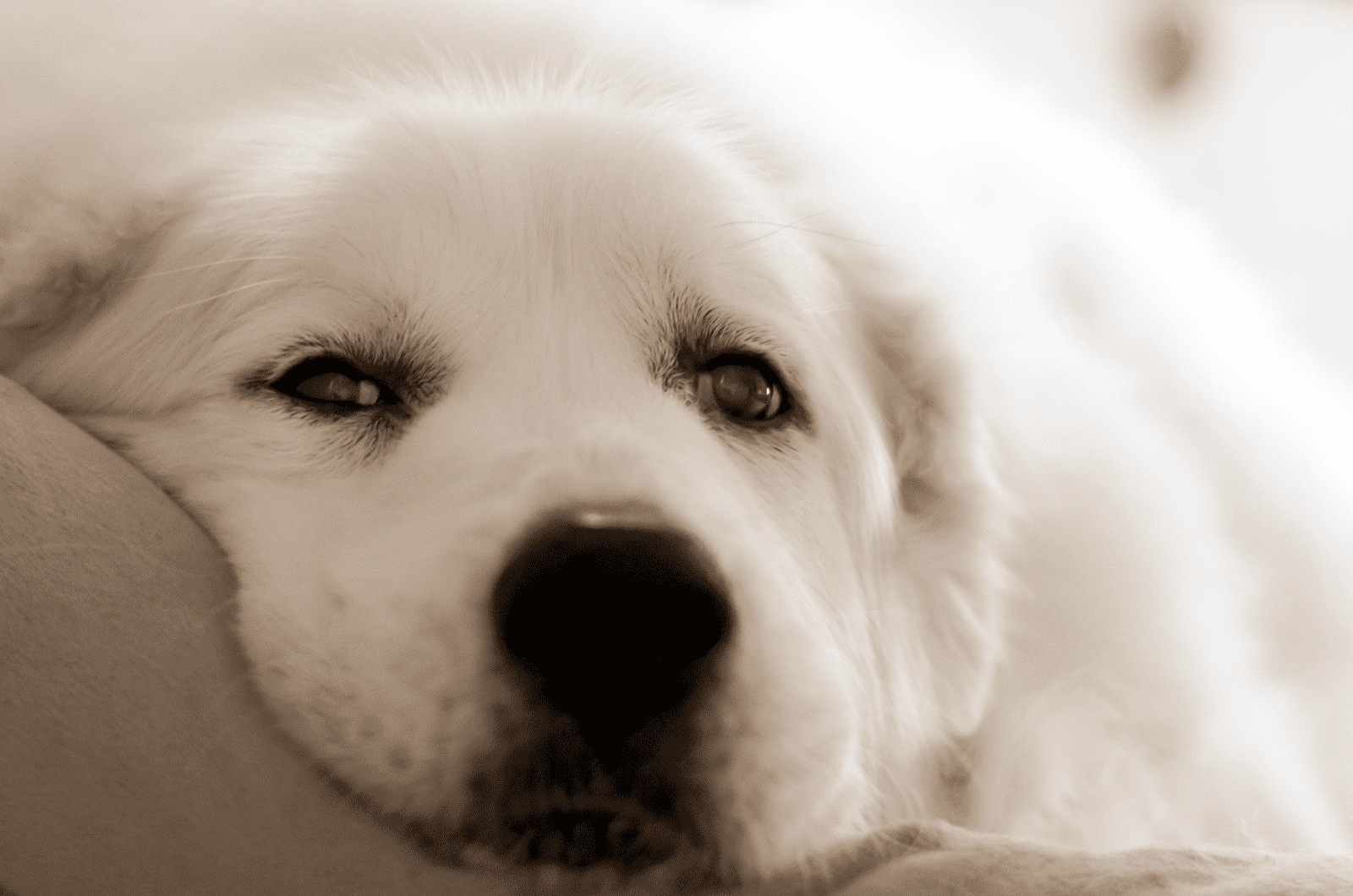
You have noticed that your dog’s nose has turned pink. All you want to know now is, will your dog’s nose turn black again. This change in your dog makes you feel uncomfortable, and you want to find the solution as soon as possible.
Whether your dog’s nose will turn black again depends on the cause of this state in your dog.
If it is the snow nose phenomenon, you can expect your dog’s nose to take on its normal color after the cold months are over. If your dog’s nose was burned in the sun, then by repairing the burns, his nose will also have its standard color again.
However, if your dog’s age causes his nose to turn pink, there is a high chance that the dog’s nose will not go back to its normal color.
So, the answer to whether your dog’s nose will turn black again lies in the very cause of this phenomenon.
What Will Happen To My Dog’s Nose If It Is Not Treated?
In many cases, a pink nose is basically a cosmetic problem rather than a serious health problem. So, if you are wondering what will happen to your dog’s nose if you do not treat it, the very possible answer is – nothing!
If a pink nose is the only change you have noticed in your dog, there is a high probability that it is not a serious problem. Therefore, you don’t have to worry, and you can continue to enjoy different activities with your pet.
Of course, some dogs are not as lucky as others.
As we have seen, a pink nose can also be a sign of more serious health problems.
If you have noticed any additional symptoms, such as depression or lack of energy in your dog, scabs in its nose, or open sores on its body, you should contact the veterinarian immediately. A dog’s nose can tell us a lot about its overall health.
What Is The Best Way To Make My Dog’s Nose Turn Black?
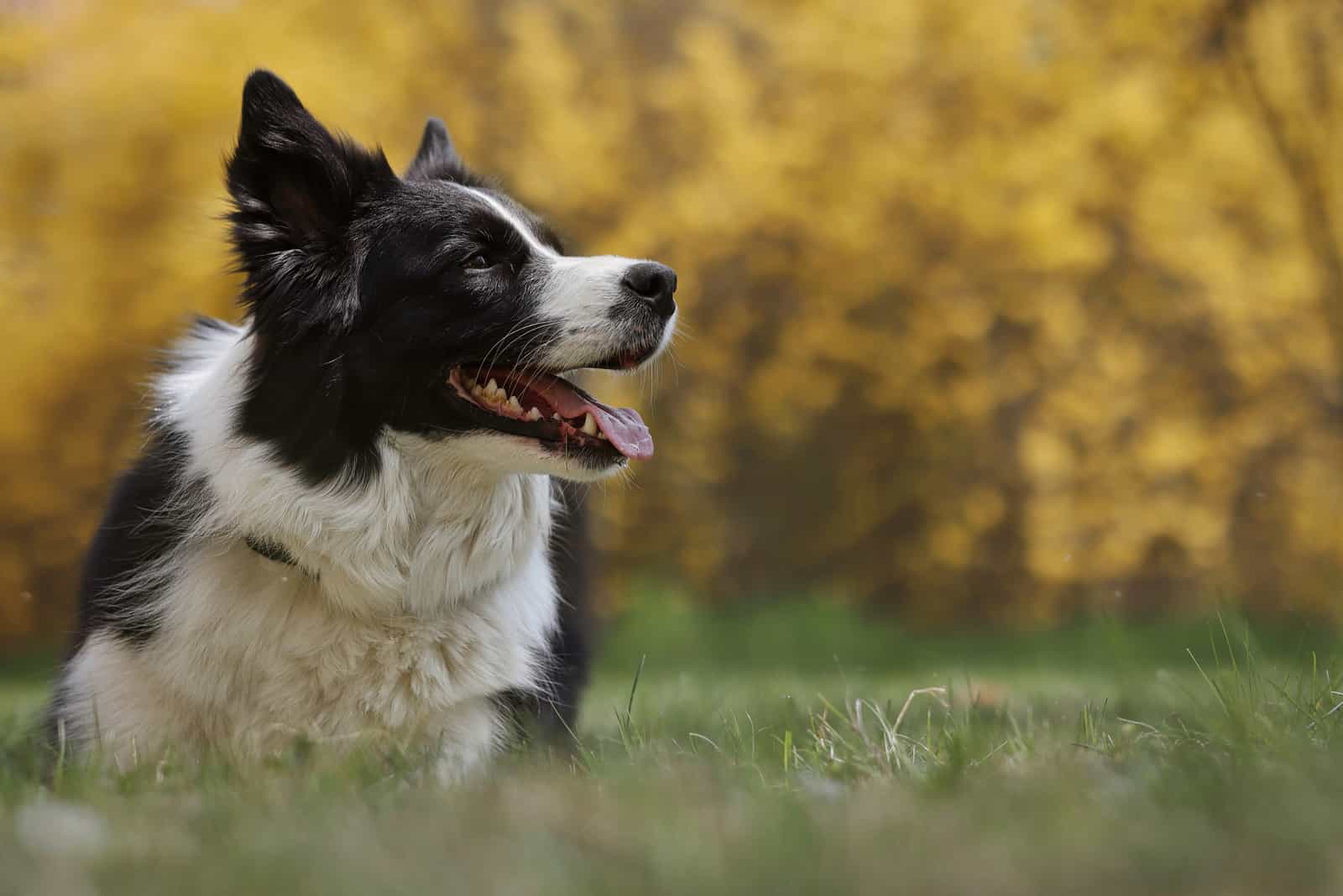
Well, if you have indeed concluded which of the above reasons is the culprit of your dog’s nose turning pink, then you are now wondering what the best way to make your dog’s nose turn black again is.
We repeat once again – it is probably a harmless cause, so you don’t have to worry too much about this phenomenon because the dog’s nose will most likely return to its normal color soon by itself.
So, is there anything you should do to make your dog’s nose turn black?
Although your dog may like lying in the sun, pay attention that he does not do this often, especially during the hot summer months.
The sun’s rays can easily burn sensitive parts of a dog’s body, especially the nose. With the use of sun cream, and also by avoiding being outside during the hottest hours of the day, it is very likely that your dog will not turn up with a pink nose!
Summing It Up
After reading this article, I am sure you now have the answer to the question why do dogs noses turn pink.
There are various causes of this condition: while some are quite harmless, others represent serious health conditions.
Changes in the dog’s body, as well as its behavior, can tell us a lot about the health of our pet. Finally, every dog owner knows his furry friend best, and notices his different states.
Even if people tell you that your dog’s pink nose is not an alarming condition, if you feel that something is wrong, it is best to contact the veterinarian immediately.
In some cases, it is good to trust your own intuition. It may turn out that you panicked for no reason, but also, you may find that you have just done your beloved pet an incredible favor!
Read Next: Why Is My Dog’s Nose Dry? How To Tell If Your Dog Is Sick
